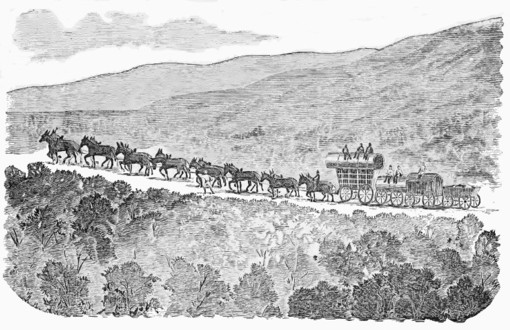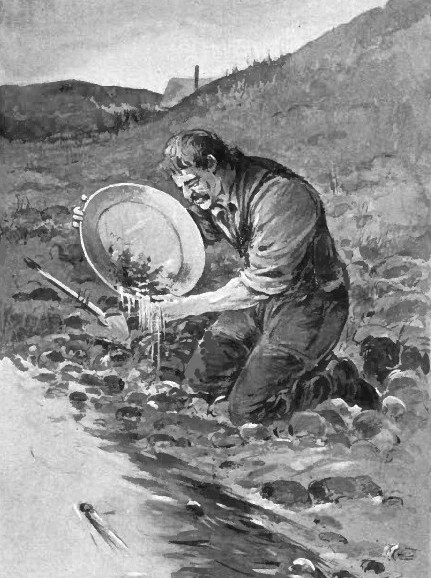2. THICKNESS OF THE VEIN. Here again there is often a confusion of the vein and the ore body. It is the thickness of the latter which is the important item to the intending investor; the total width of the fissure is only of interest as suggesting a possibility that at some point or other it may be completely filled with ore. How Measured. While the thickness of the ore body may be accurately measured at as many points as may be deemed desirable to get a fair average, the width of the vein (by which is meant the distance between the walls at right angles to them, not horizontally) may be very difficult to ascertain, and many statements are made on this score with the best intentions, which are misleading, because the parties have no true idea as to what really constitutes the vein.
Total Width and Ore Thickness. On the Comstock lode the distance between the east and west walls on the surface in the Savage mine was fully 1,000 ft., of which only a small part was quartz and of that only a portion was available ore. The width was about the same at the Chollar-Potosi mine, some 1,600 ft. to the south, with several quartz bodies cropping parallel to each other, of which pi. 2, fig. 2, will give a fair idea in cross section. These were at first supposed to be separate veins, but at about 330 ft. below the croppings the Savage mine was reduced to a width of 800 ft., nearly all waste matter; and the Chollar-Potosi mine to a width of 150 ft., all quartz, of which about one quarter was ore.
Veins on Dikes. In cases where the ore forms on the walls of a porphyry dike (as in many of the mines of the Monte Cristo district, in Washington), the gold prospector generally calls the entire dike the vein, giving it a width of from 20 to 50 ft. or over, because he may be able to find traces of iron pyrite in the more decomposed portions of the dike, the bulk of which is, however, unaltered rock. Obviously the vein is only that portion of the decomposed dike which has been replaced by ore. To give the entire width of the dike as the vein, will create a very serious misunderstanding, as it is scarcely probable that it will have been converted to an ore body for its full thickness, at any point of its length.
False and Indistinct Walls. In other cases, where there has been much motion in the fissure, its walls may have become much shattered and rotten, forming a series of slabs, each of which may present the smooth face of a true wall, even to the slickensides, but which will peel off one after the other, after a short exposure to the air, making it difficult to state positively when the true wall is reached In slatey rocks there may be one wall well defined (if the vein is a contact) while parallel bodies of ore or barren ganglia may lie in the slates for several hundred feet from the contact (pi. 6, fig. 1), as in the mother lode of California. Under these circumstances it is better to give the width of the ore, and if there is a decided difference in its appearance, the width of each portion, taking samples as described previously. If the length and width of the ore bodies as they show on the surface were ascertained in this manner, a large number of locations would be abandoned, having failed to stand the test of working value; and while the prospector would have fewer locations on his hands, he would be saved the burden of the annual assessment work on worthless properties, and he could .honestly ask capital to aid the development of those so carefully selected.
3. SAMPLES OF THE COUNTRY ROCK. While a study of the chapter on rocks will have enabled even a beginner to speak of them with something like accuracy, it would be well to take a small hand sample of the rock on each side of the vein. We have seen what important differences there are in the shape of deposits in different rocks, and one of the first questions an expert will ask is on this subject, as it affects also the cost of working most seriously, a drift or shaft in soft slate costing very much less than one in hard granite.
Should there be a doubt as to the judgment or knowledge of the prospector the specimens will speak for themselves, and are nearly as important as the ore samples. These samples need not be taken immediately from the walls themselves, as in such places the rocks are usually greatly decayed and unrecognizable in small pieces. It is better to take them a little distance from the vein (say from the nearest outcrop in place), as these are likely to be solid, being harder than their neighbors, and while taking these samples to note whether the outcrop of the vein occurs in a country which is badly broken up, or whether the hills are large and smooth. The latter appearance promises better than the former for a solid continuous vein without displacements. In selecting specimens the prospector should also ascertain whether the vein runs parallel to the general direction of the rocks, or whether it cuts across the formation features which have an important influence on the probable permanence of the lode in depth, the latter structure almost necessarily involving a deep fissure of considerable length as well as depth.
The names of even the common rocks seem to be a continual stumbling block to most prospectors, apparently for no other reason than a failure to realize the fact that each kind is made up of a definite combination of a few minerals. It would seem as though the trouble of learning to distinguish from ten to twenty kinds, which is about all that is necessary, ought not to be such a serious matter. Every business has its own language, and those who wish to excel must necessarily learn to speak in a language which will convey the same idea to all hearers, and each word of which will convey a positive idea, instead of a hazy nothing. The writer recently met a prospector who had some fair-looking specimens of ore, but when questioned about the mode of occurrence and the lay of the country, in an effort to get an idea of the facilities for working, in reply to a question as to whether it was a granite country he answered "Yes." When asked if there was slate, "yes" was the reply. And to fully satisfy any further inquiries which might be made for other rocks he added, "There is a regular jumble of them!" If this was really the case he had condemned his property, as such a condition necessarily involved a badly broken country, but it was evident that he knew nothing about the subject under discussion, while he simply cast a doubt upon every other statement he had made, showing that he was not a good observer. To make things worse he subsequently inquired what basalt was worth, and when informed that it was merely a black volcanic rock without value for any of the precious metals, he gently intimated that his informant might know what he was talking about, but that he had his own opinion on the subject. His basalt proved to be orpiment, a yellow compound of arsenic and sulfur.
Continue on to:
Gold Prospecting Basics, Part 3
Return To:
Gold And Silver Basic Prospecting Methods


